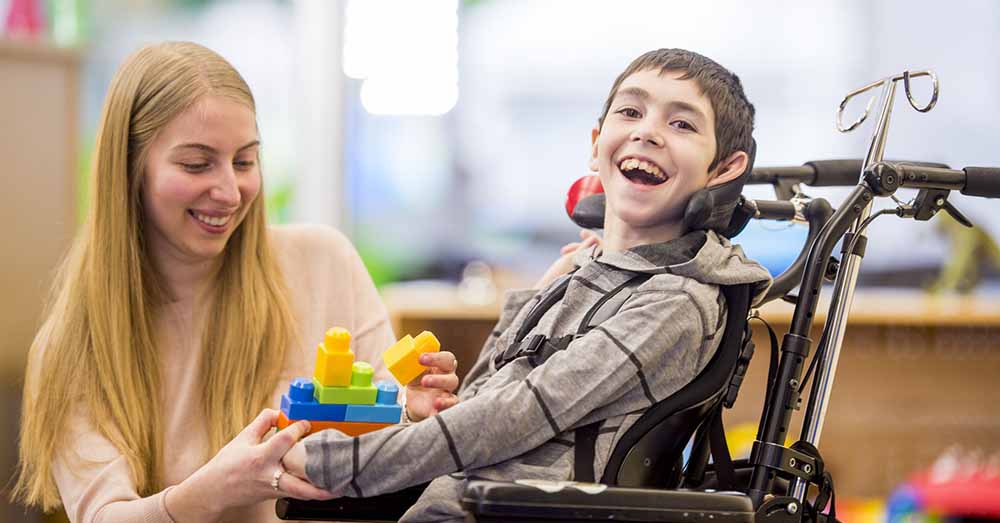Cerebral palsy (CP) is a group of disorders that affect balance, movement, and muscle tone. “Cerebral” denotes the brain, and “palsy” refers to weakend muscle. CP starts in the area of the brain that controls the ability to control muscles movement. Cerebral palsy can happen when that part of the brain doesn’t develop as it should, or when it is damaged right around the time of birth or very early in life. Most people with cerebral palsy are born with it, known as “congenital” CP. But it can also start after birth called as “acquired” CP. People with cerebral palsy can have mild issues with muscle control, or it could be so severe that they can’t walk. Some people with CP have difficulty speaking. Others have intellectual disabilities, while many have normal intelligence.
Types of CP
Spastic cerebral palsy- The most common kind is spastic CP. If you have it, your muscles are stiff or tight, or they spasm.
Dyskinetic cerebral palsy- If you have dyskinetic CP, your muscle tone might be too tight or too loose. Your movements are uncontrolled: slow and twisting, or quick and jerky. If the muscles in your face or mouth are affected, you might frown, drool, and have trouble speaking.
Ataxic cerebral palsy- Ataxic CP, which is rare, causes problems with coordination and balance. You might be unsteady when you walk. You might also shake, which could make it hard to do tasks that need steadiness, such as writing.
Mixed cerebral palsy- People with this type of CP have symptoms of more than one type. Most people with mixed CP have a combination of spastic and dyskinetic.
Symptoms of Cerebral Palsy
Some symptoms may show up at birth, while others may take longer to appear. In babies younger than 6 months, those signs include:
When you pick your baby up from sleeping (on their back), their head falls backward.
They feel stiff or floppy.
When cradled in your arms, they extend their back and neck, almost as if pushing away from you.
When you pick them up, their legs get stiff and cross over each other (“scissor”).
If your baby is older than 6 months, warning signs can include:
They can’t roll over.
They can’t bring their hands together.
They have trouble bringing their hands to their mouth.
When they reach, it’s with only one hand. The other stays in a fist.
If your baby is older than 10 months, watch for these signs:
They crawl by pushing off with one hand and one leg while dragging the other side of their body.
They don’t crawl on all fours but scoots instead, or they hop on their knees.
If your baby is more than 1 year old and can’t stand without support or crawl, those are also possible signs of CP.
Treatment
Physical therapy and rehabilitation. A child with cerebral palsy usually starts these therapies in the first few years of life or soon after being diagnosed. Physical therapy is one of the most important parts of treatment. It involves exercises and activities that can maintain or improve muscle strength, balance, and movement. A physical therapist helps the child learn skills such as sitting, walking, or using a wheelchair. Other types of therapy include:
Orthotic devices. Braces, splints, and casts can be placed on the affected limbs and can improve movement and balance. Other devices that can help with movement and posture include wheelchairs, rolling walkers, and powered scooters.
Assistive devices and technologies. These include special computer-based communication machines, Velcro-fastened shoes, or crutches, which can help make daily life easier.
Medication. Certain medications can relax stiff or overactive muscles and reduce abnormal movement. They may be taken by mouth, injected into affected muscles, or infused into the fluid surrounding the spinal cord through a pump implanted near the spinal cord. For children who have cerebral palsy and epilepsy (seizures), standard epileptic medications should be considered, but these medications may also have negative effects on the developing brain.
Surgery. A child may need surgery if symptoms are severe. For instance, surgery can lengthen stiff, tightly contracted muscles. A surgeon can also place arms or legs in better positions or correct or improve an abnormally curved spine. Sometimes, if other treatments have not worked, a surgeon can cut certain nerves to treat abnormal, spastic movements. Before conducting surgery, it is important for a health care provider to assess the procedure’s benefits by carefully analyzing biomechanics of the joints and muscles.



